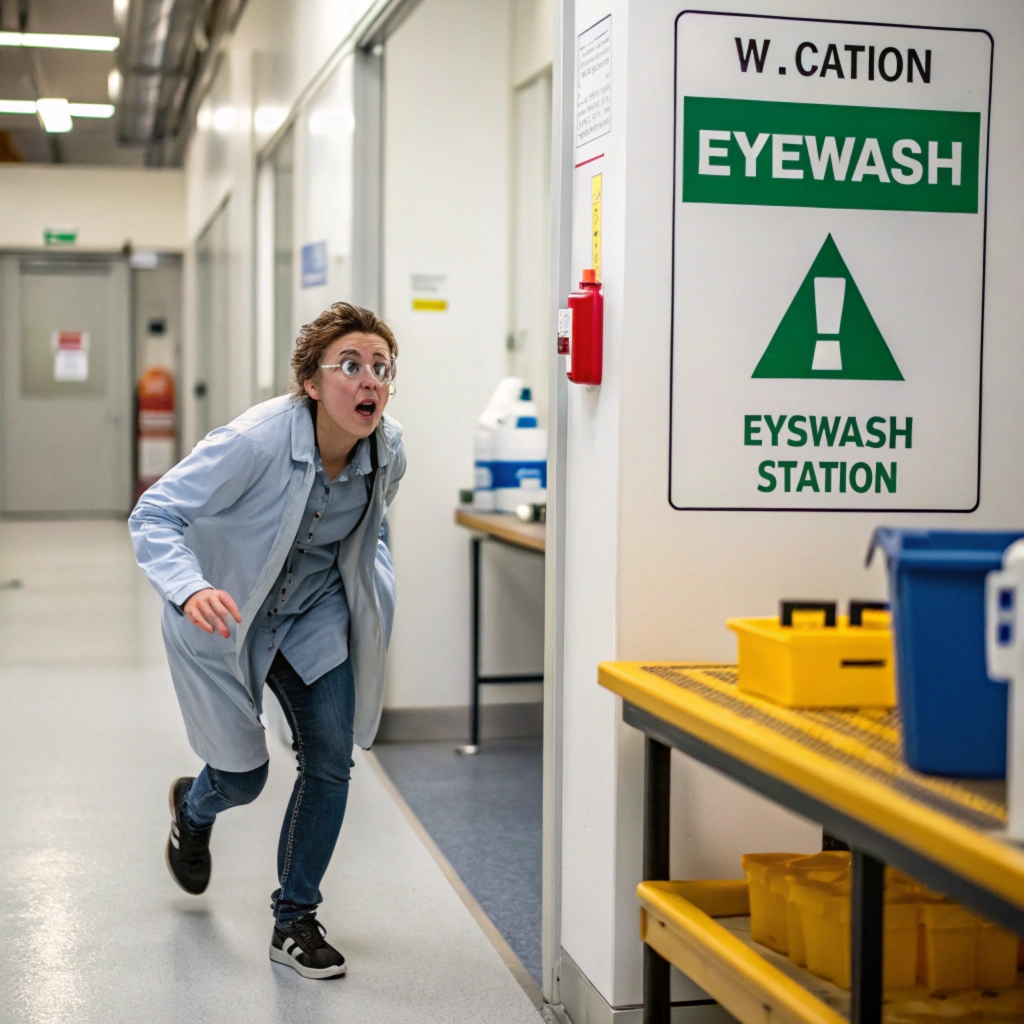Table of Contents
How to Use an Eyewash Station – Step-by-Step Guide for Immediate Eye Safety
Eyewash stations are essential in any environment where chemical splashes or harmful particles could contact the eyes. Knowing how to use an eyewash station correctly can prevent further injury and help you recover faster. Below, we outline each step to use an eyewash station effectively.
Step 1: Quickly Make Your Way to the Eyewash Station
In the event of eye exposure to harmful substances, it’s essential to act quickly. If you feel any irritation, burning, or foreign object in your eye, head straight to the nearest eyewash station. Delays in rinsing can allow chemicals to penetrate deeper or cause more damage.
Step 2: Activate the Eyewash Station
Once at the eyewash station, activate it immediately. Most eyewash stations have a simple push lever or paddle that, when engaged, releases a flow of water or saline solution. The water should be tepid (lukewarm) to prevent additional irritation from extreme temperatures.
Step 3: Hold Your Eyes Open and Position Correctly
Lean over the eyewash station so that the water flows directly into both eyes. Keep your eyes as wide open as possible to allow the water to flush out contaminants effectively. For plumbed stations, the nozzles will typically provide a steady, gentle flow. In the case of portable eyewash bottles, position them so the solution pours over the entire eye.
Step 4: Rinse for At Least 15 Minutes
Rinse your eyes for a minimum of 15 minutes to ensure thorough removal of any contaminants. This length of time may seem long, but it is necessary to wash out both the surface of the eye and the surrounding tissue. For severe exposures, continue rinsing until emergency help arrives.
Step 5: Move Your Eyes in Different Directions
While rinsing, move your eyes side-to-side, up, and down. This motion ensures the water reaches all areas of the eye, including under the eyelids where particles or chemicals could be trapped.
Step 6: Avoid Rubbing Your Eyes
Refrain from rubbing or pressing on your eyes during the rinse. Rubbing can further embed particles or spread chemicals over a larger area, leading to increased irritation or injury.
Step 7: Remove Contact Lenses (if applicable)
f you wear contact lenses, try to remove them while rinsing your eyes. Contact lenses can trap harmful substances against your eyes, hindering the rinse. Rinse the eyes thoroughly after removing the lenses to wash away any remaining contaminants.
Step 8: Seek Medical Attention
After completing the eyewash process, it’s crucial to seek professional medical advice, especially if the exposure was to chemicals or if irritation persists. Even with prompt eyewash use, some injuries may require additional treatment.
Following these steps can protect your eyesight and minimize the risk of long-term damage from eye exposure to chemicals or particles. Regularly familiarize yourself with the eyewash stations in your work area and make sure they’re easily accessible and functional in case of emergency.




